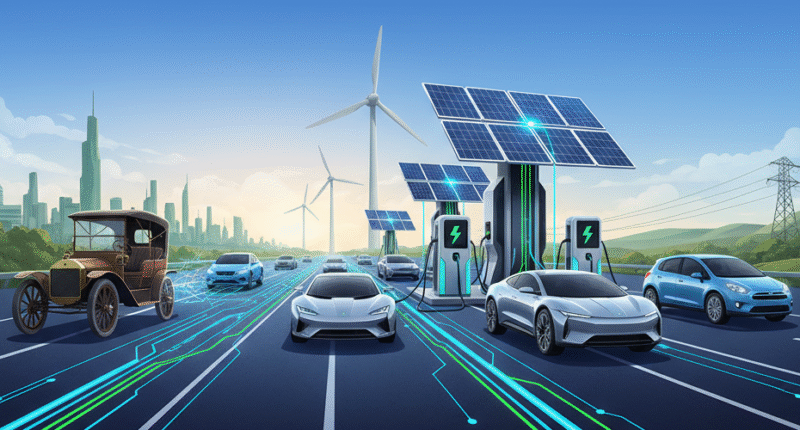The evolution of electric vehicles (EVs) has been shaped by a combination of technological advancements, environmental concerns, economic forces, and regulatory policies. From early inventions in the 19th century to today’s high-performance electric cars, several key factors have driven the transformation and adoption of EVs globally.
Early Technological Innovations
Battery and Motor Development
The foundational element for EV evolution has been battery technology. The development of the rechargeable lead-acid battery in 1859 was critical, allowing electric vehicles to move beyond rudimentary prototypes. Subsequent advancements in lithium-ion batteries have greatly improved driving range and charging speeds, making modern EVs practical for everyday use.
Electric Motor Efficiency
Early EVs faced challenges with motor efficiency and power output. Innovations in electric motor design and power electronics, including the introduction of brushless motors and regenerative braking systems, have enhanced vehicle performance and energy efficiency.
Environmental and Societal Drivers
Climate Change Awareness
Growing concerns about air pollution and greenhouse gas emissions have pushed both consumers and governments toward cleaner transportation options. EVs produce zero tailpipe emissions, making them a central technology in the fight against climate change.
Oil Crises and Fuel Prices
Historical spikes in oil prices, especially during the 1970s oil crisis, highlighted the vulnerability of reliance on fossil fuels. This economic pressure spurred renewed interest in electric and alternative fuel vehicles, influencing automakers to invest in EV research.
Government Policies and Incentives
Regulatory Support
Many countries have implemented strict emission standards, fuel economy mandates, and outright bans on internal combustion engine (ICE) vehicle sales starting in the 2030s. These measures have accelerated EV adoption by pushing manufacturers toward electrification.
Financial Incentives
Tax credits, rebates, reduced registration fees, and subsidies for EV buyers have made electric cars more accessible to consumers. Investments in charging infrastructure by public and private sectors have reduced barriers to EV ownership.
Industry and Market Evolution
Automaker Commitment
Major global automakers have shifted strategies to focus heavily on electric mobility, launching a variety of EV models with competitive features and ranges. Collaboration across the industry on battery supply chains and technology platforms has accelerated innovation cycles.
Consumer Demand and Awareness
Increased environmental consciousness and improved EV affordability have driven consumer adoption. Technological enhancements in infotainment, autonomy, and design aesthetics have made EVs attractive alternatives to traditional cars.
Infrastructure and Technology Ecosystem
Charging Network Expansion
The establishment of widespread, fast, and reliable charging stations has been a turning point. This includes home chargers, fast DC chargers along highways, and innovative solutions like battery swapping, doubling vehicle usability.
Smart Grid and Energy Integration
Efforts to integrate EV charging with renewable energy sources and smart grid management optimize energy use and reduce environmental impact, bolstering the sustainability credentials of EV technology.
Conclusion
The evolution of electric vehicles is the result of intertwined technological breakthroughs, environmental imperatives, supportive policies, and market dynamics. As battery and motor technologies continue to advance alongside expanding infrastructure and regulatory frameworks, EVs are positioned to dominate the future of mobility, driving the transition toward cleaner, more sustainable transportation worldwide.










3 comments
Ok
Thank you
The article highlights Wider perspective on factors that might facilitate EV evolution.